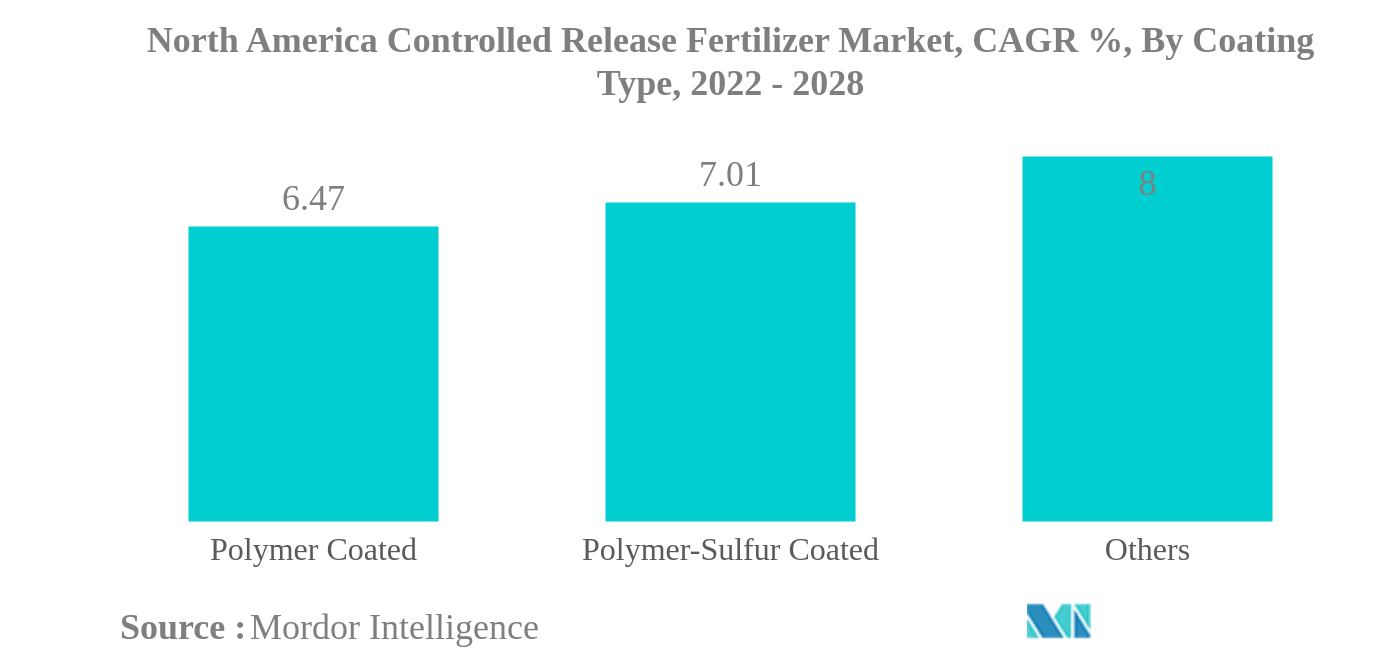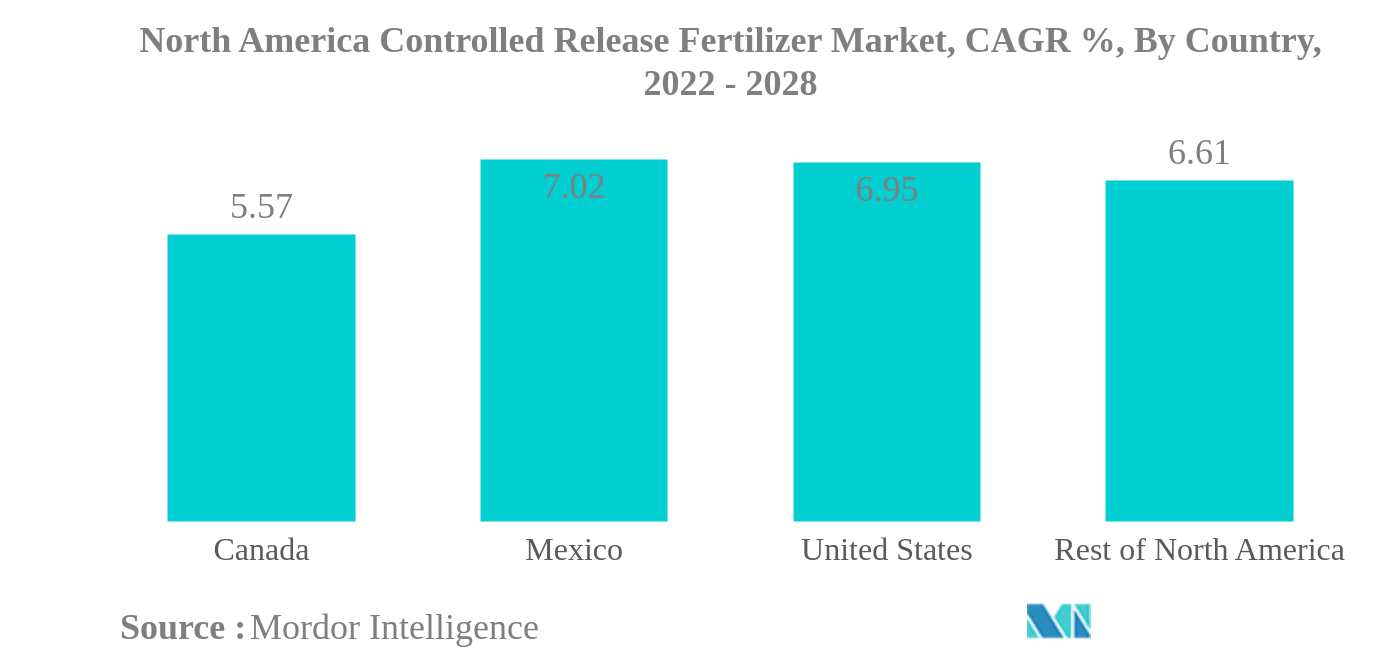Market Trends of north america controlled release fertilizer Industry
This section covers the major market trends shaping the North America Controlled Release Fertilizer Market according to our research experts:
Polymer Coated is the largest segment by Coating Type.
- The North American controlled-release fertilizer market grew by 70.6% during the study period. Precision farming is widely practiced in North America. An important component of precision farming is the provision of the right dosage of nutrients to crops at the right time. Thus, controlled-release fertilizers serve as important inputs in precision farming.
- Field crops occupy 82.4% of the overall market, followed by turfs and ornamentals, which constitute 13.9% of the market share. These types of coated controlled-release fertilizers are commonly used in specialty, high-value crops like cereals, grains, and vegetables, as well as in areas like orchards and nurseries. Although the use of specialty chemicals is limited in row crops, their usage is increasing due to higher grain prices, environmental concerns, and other regulations.
- The United States is the largest market for controlled-release fertilizers. It accounted for 81.9% of the market in 2021, registering a growth of 70.43% during the study period.
- With the growing technological advancements in the fertilizer industry, the Environmental Protection Agency (EPA) and the US Department of Agriculture (USDA) partnered with various stakeholders, such as The Fertilizer Institute (TFI), the International Fertilizer Development Center (IFDC), The Nature Conservancy (TNC), and the National Corn Growers Association (NCGA), to boost awareness about controlled-release fertilizers among farmers. These factors are anticipated to boost the country’s field crop production.

United States is the largest segment by Country.
- The United States was the largest market for controlled-release fertilizers, accounting for 81.9% of the market in 2021. The country registered a growth of 70.4% during the study period.
- The polymer coating segment was the largest coating type in 2021, accounting for 63.2% of the market. The country is concentrated on field crop cultivation. Thus, the demand for polymer-coated controlled-release fertilizers is high to meet environmental and cost-related concerns.
- The increased cultivation of field crops in Canada includes wheat, canola, and maize, and various government initiatives, such as the Farm Credit Canada, offer increased credit availability for farm inputs involving the cost of buying expensive and efficient fertilizers like controlled-release fertilizers. This trend is anticipated to drive the controlled-release fertilizer market in the country during the forecast period.
- Similarly, in 2021, the Mexican legislature approved the 2022 Federal Government Budget, allocating roughly USD 2.70 billion to the Secretariat of Agriculture and Rural Development (SADER), wherein 70% was allocated to fertilizer subsidies.
- The production of cereals in Costa Rica decreased in 2020 from 2017, with a production of 197,701 metric ton in 2017 to 151,685 ton in 2020. This decrease facilitates the demand for controlled-release fertilizers for enhanced productivity and crop quality.
- The need to increase the production of field crops across the region, coupled with the various government initiatives and increasing awareness among the farmers, is anticipated to drive the market during the forecast period.

